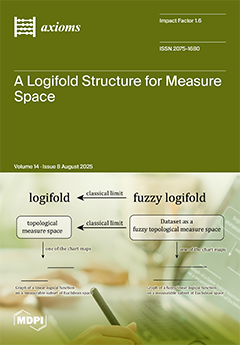In this study, we present a novel, six-dimensional, multistable, memristive, hyperchaotic system model demonstrating two positive Lyapunov exponents. With the maximum Lyapunov exponents surpassing 21, the developed system shows pronounced hyperchaotic behavior. The dynamical behavior was analyzed through phase portraits, bifurcation diagrams, and
[...] Read more.
In this study, we present a novel, six-dimensional, multistable, memristive, hyperchaotic system model demonstrating two positive Lyapunov exponents. With the maximum Lyapunov exponents surpassing 21, the developed system shows pronounced hyperchaotic behavior. The dynamical behavior was analyzed through phase portraits, bifurcation diagrams, and Lyapunov exponent spectra. Parameter
b was a key factor in regulating the dynamical behavior of the system, mainly affecting the strength and direction of the influence of
on
. It was found that when the system parameter
b was within a wide range of
, the system remained hyperchaotic throughout. Analytical establishment of multistability mechanisms was achieved through invariance analysis of the state variables under specific coordinate transformations. Furthermore, offset boosting control was realized by strategically modulating the fifth state variable,
. The FPGA-based experimental results demonstrated that attractors observed via an oscilloscope were in close agreement with numerical simulations. To validate the system’s reliability for cybersecurity applications, we designed a novel image encryption method utilizing this hyperchaotic model. The information entropy of the proposed encryption algorithm was closer to the theoretical maximum value of 8. This indicated that the system can effectively disrupt statistical patterns. Experimental outcomes confirmed that the proposed image encryption method based on the hyperchaotic system exhibits both efficiency and reliability.
Full article




